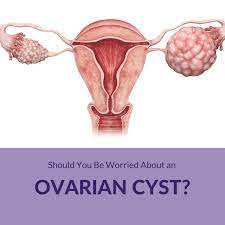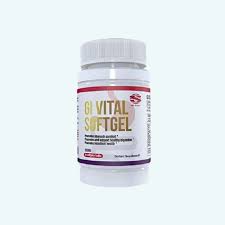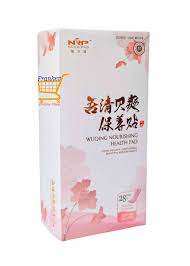How to Treat Ovarian Cyst with Norland Products in Nigeria
 How to Treat Ovarian Cyst with Norland Products in Nigeria
How to Treat Ovarian Cyst with Norland Products in Nigeria
It is worthy to note that the ovaries are a part of the reproductive system of females. According to Healthline.com, they can be found in the lower abdomen on the two sides of the uterus.
If you never knew, females have two ovaries that produce eggs and hormones known as progesterone and estrogen. In addition, there are times wherein a fluid-filled sac known as a cyst develops on one of the ovaries.
The fact remains that most women will develop a minimum of one cyst all through their lifetime. In some cases, the cysts are painless and have no symptoms. Nevertheless, it must be noted that ovarian cysts are solid.
Or, they are fluid-filled pockets in the ovary or on the ovary. More so, they are common in pregnant women or women who have not yet gone through menopause. In most cases, they are harmless and causes no pain.
Women may get one each month as a part of their menstrual cycle and never even know. They tend to go away on their own without any form of treatment. However, the cyst becomes an issue when it does not go away or when it grows bigger.
Now, it becomes painful, and there is even a possibility of cancer, though this is rare. Understand that the chances increases as one gets older.
Types Of Ovarian Cysts
According to Medicalnewstoday.com, there are two major types of ovarian cysts. While cysts can form anywhere on the body, they can be microscopically small or tremendous. The two main types are:
- Functional ovarian cysts
It is the most popular type. They are harmless cysts that form a part of the female’s regular menstrual cycle and are even short-lived. Bear in mind that there are two types of functional ovarian cysts. They are:
These are the most common type of functional ovarian cysts. Since a woman has two ovaries, the egg tends to move from an ovary straight into the womb, where it gets fertilized by the sperm.
Note that the egg is developed in the follicle, and this follicle contains fluid that protects the growing egg. Once the egg is released, the follicle bursts. However, there are cases wherein the follicle does not shed any of its fluid.
Instead, it shrinks after releasing the egg or sometimes, it does not release the egg. More so, the follicle rather swells with the fluid and becomes a Follicular ovarian cyst. Note that one cyst appears regularly at any time and goes away generally within weeks.
They are less common functional ovarian cysts. When the egg is released, it leaves behind some tissues known to be the corpus luteum. The literal cysts tend to develop once the corpus luteum gets filled with blood.
Understand that this cyst only goes away normally in months. Nevertheless, it may split or get ruptured, and this causes both immediate pain and internal bleeding.
- Pathological cysts
These are cysts that tend to grow in the ovaries. They can either be harmless or even cancerous. There are two types of this cyst, and they are:
- Dermoid cysts (Cystic teratomas)
The dermoid cyst is normally benign. It is formed from the cells that create the eggs. However, they will need to be removed through surgery. Note that dermoid cysts are the most popular type of pathological cyst for females under thirty.
These are known as ovarian cysts that develop from cells that cover the outer part of the female ovary. Some of them are filled with either a thick yet mucus-like substance; the others are filled with watery liquid.
Instead of growing inside the ovary, the cystadenomas attach themselves to the ovary through a stalk.
Since it exists outside of the ovary, it can grow quite big. Therefore, it is rarely cancerous though it must be removed by surgery. They are known to be common among females aged more than forty years.
Furthermore, some other less popular types of cysts are:
They are also referred to as chocolate cyst. It must be noted that Endometriosis is regarded as a condition wherein the cells that usually grow inside as a lining of the womb will rather grow outside of the uterus in some other locations.
Note that the female ovary is a popular site for Endometriosis. When it involves the ovary, the region of endometrial tissue may tend to grow and bleed with time. Thus, forming a cyst that is blood filled with either brown or red-coloured content.
This content is known as an endometrioma.
- Polycystic ovarian syndrome
Popularly knowns as PCOS, this condition is characterized by diverse small cysts found within the two ovaries. It is linked with several hormonal issues, and it is the most common cause of women infertility.
This is an infection of the pelvic organs, and it can go further to involve the ovaries and the fallopian tubes. In some severe cases, one might find pastilles cystic spaces present in, around or on the tubes or ovary.
Symptoms Of Ovarian Cysts
Like we mentioned above, most of the cysts are symptomless. However, if there are symptoms present, they are barely useful for diagnosing an ovarian cyst. This is because there are other conditions like Endometriosis that have similar symptoms.
However, some of the symptoms of ovarian cyst may be:
- Painful or irregular menstruation
The menstruation may be lighter or even heavier than it was before
It may either be a persistent pain or just an intermittent dull ache that spreads to one’s thighs and lower back. It tends to appear before the menstruation starts or when it ends.
It is pelvis pain that tends to be felt during sex. Some women may feel discomfort and pain in their abdomen after having sex.
It entails pains when passing a stool, frequent need to pass a stool and even pressure on the bowels.
This may include swelling, bloating or heaviness in your abdomen.
A woman may have issues emptying her bladder, or she may frequently feel the need to urinate.
On rare occasions, the body generates abnormal amounts of hormones. This may result in changes in how the body hair and breasts grow.
There are some complications when it comes to ovarian cysts. While they most often do not cause any issues, they can sometimes have difficulties. Some of these include:
Here, the stem of the ovary is twisted if the cyst grows on it. It can even block the blood supply to the cyst and result in severe pain in one’s lower abdomen.
If the cyst bursts, the person will feel terrible pain in their lower abdomen. And if it is infected, the pain becomes worse. Finally, bleeding may occur, and the symptoms are similar to those of diverticulitis or appendicitis.
In some extremely rare cases, the cyst may be an early form of ovarian cancer.
Treatment Of Ovarian Cyst
According to Clevelandclinic.org, functional ovarian cysts will generally go without any form of treatment. So your doctor may as well give you some medications that contain hormones to stop the ovulation and future cysts from developing.
For those who do not ovulate, functional cysts will not form. However, in some other cases, surgery will be needed to remove the cyst. More so, the surgery needed to treat ovarian cyst will be dependent on the cysts’ size and how it shows up on the ultrasound.
The various procedures are:
It is a procedure wherein the doctor inserts a small device via a small incision in the abdomen. The doctor views the reproductive organs as well as the pelvic cavity through this device.
He or she can remove the cyst via tiny incisions.
It is a procedure that makes use of a more extensive incision to remove the cyst. Note that the cyst will be further tested for cancer. If it is cancerous, the doctor will have to remove one or both ovaries, the uterus, some lymph nodes and a fold of fatty tissue known as omentum.
What Is Norland Products?
The first thing to note is that Norland products have been successfully used to cure many ailments like Cancer, diabetes, hypertension, infertility of both genders, HIV, hepatitis and even paralysis, to name a few.
For those unaware, Norland was established in the year 2008, and it is regarded as a large scale transnational industrial group. Thus group fully covers medical cosmetology, health, e-commerce and direct selling (MLM).
The Norland insured is integrated with diverse businesses such as medical services, health management, production, finance and international logistics.
It must be noted that this company has taken a giant lead in the health detoxification field. And it does this by adhering to its vision. Its vision states that it will create a universal ecosystem of health and detoxification in a bid for everyone to benefit from health awareness.
As it stands, this company can be found in roughly forty-eight countries and four continents, this includes Africa. It began in Africa in 2017 and has been in Nigeria for three years.
How are Norland Product sold?
Norland products are sold through Network Marketing?
Network marketing is a Direct selling method in which independent-agents serve as distributors of goods and services, and are encouraged to build and manage their own sales force by recruiting and training other independent agents.
In this method, a commission is earned on both the agent’s own sales revenue, as well as on the sales revenue of the sales-force recruited by the agent and his or her recruits (called downline). Also called multilevel marketing (MLM), cellular marketing, or by other such names, it is a multi-billion dollar worldwide industry that distributes practically any portable item.
How to Treat Ovarian Cyst with Norland Products in Nigeria
- Gi Vital softgel 3-5 softgels 2x daily
 How to Treat Ovarian Cyst with Norland Products in Nigeria
How to Treat Ovarian Cyst with Norland Products in Nigeria
- Calcium iron zinc – 1 cap 2x daily
- Immune plus 1cap 2x daily
- Female Health Pad – wear pad 4-6hrs
 How to Treat Ovarian Cyst with Norland Products in Nigeria
How to Treat Ovarian Cyst with Norland Products in Nigeria
- Anion Sanitary pad – wear under pad
- Anion pantliner strip – put strip in drinking water
Note: Norland Treatments generally is for 3 months.
To make a purchase and to find out the cost call or whatsapp 08060779290
https://api.whatsapp.com/send?phone=2348060779290
Testimony
STROKE PATIENT RECOVERED WITHIN FEW WEEKS OF NORLAND TREATMENT.
He has not walked for five years but with Norland products he was revived and can walk on his own.
Related